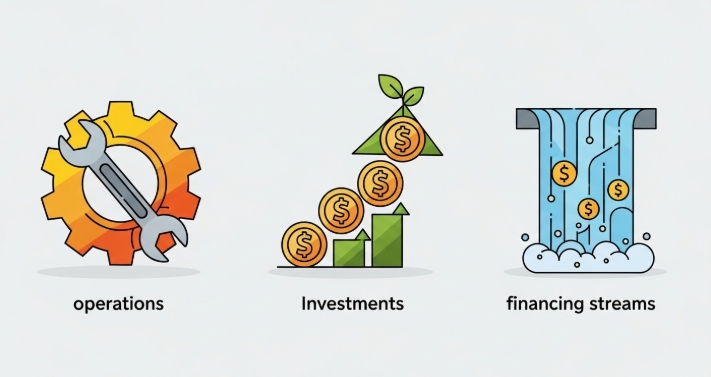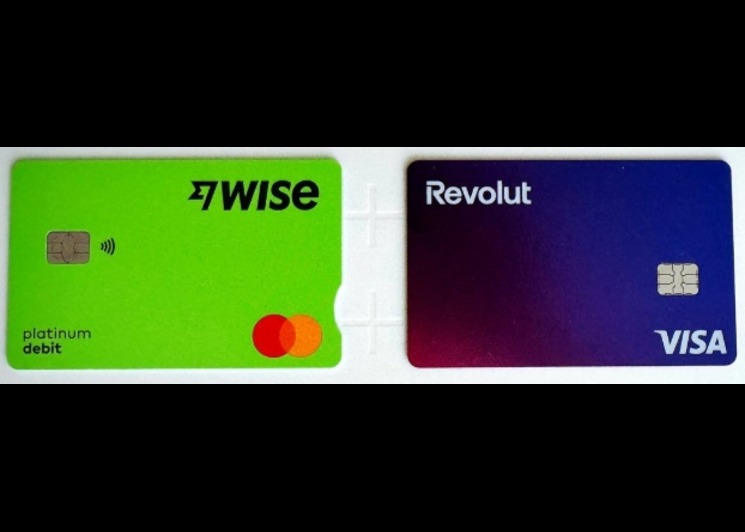Managing Cash Flow: Practical Insights for Growing Businesses

Managing cash flow is one of the biggest challenges business owners and startups face today. It’s not just about how much money your business earns, it’s about how well you manage what comes in and goes out. According to a U.S. Bank study, 82% of small businesses fail due to poor cash flow management. That number alone shows why understanding and improving how you’re managing cash flow can make or break your business.
- Managing Cash Flow: Practical Insights for Growing Businesses
- Why Managing Cash Flow Matters to Every Business
- Cash Flow vs Profit: Why the Difference Matters
- Understanding the Working Capital Cycle in Cash Flow Management
- Key Components of Cash Flow Management
- Managing Cash Flow with Accurate Forecasting
- Practical Cash Flow Management Strategies for Business Owners
- Data-Driven Insights: What Numbers Reveal About Managing Cash Flow
- Managing Cash Flow with Bycard: Cash flow management strategies that scale
- Improving Financial Discipline through Managing Cash Flow
Why Managing Cash Flow Matters to Every Business
At its core, managing cash flow means keeping a steady balance between income and expenses. It’s about making sure your business always has enough liquid funds to cover payroll, rent, supplies, and other costs. Cash flow management goes beyond tracking profits; it looks at timing. You can be profitable on paper but still run out of money if your payments come in late or your expenses pile up too soon.
For startups, effective cash flow management can mean survival during the early stages. When investors or customers delay payments, the ability to forecast and plan your cash movements becomes your lifeline. For established businesses, managing cash flow well helps sustain growth, fund expansion, and avoid unnecessary borrowing.

Perfect Card for Cash Flow management!

Cash Flow vs Profit: Why the Difference Matters
A common mistake among new business owners is assuming that profit equals cash flow, but they measure very different things.
Profit shows how much money your business earns after expenses, while cash flow tracks when that money actually moves in and out of your accounts.
You can be profitable on paper but still experience negative cash flow if customers delay payments or expenses pile up faster than income. That’s why managing cash flow is more critical for survival, it reflects your real financial flexibility, not just your accounting success.
When businesses confuse profit with cash flow, they risk over-investing, overspending, or failing to spot a liquidity crunch early. Cash flow management strategies help bridge this gap by focusing on timing and movement, not just totals.
Understanding the Working Capital Cycle in Cash Flow Management
To manage cash flow effectively, you need to understand your working capital cycle, the time it takes to turn your resources (like inventory and receivables) into cash.
The shorter your working capital cycle, the healthier your cash flow. Here’s how it works:
- Inventory Days (DIO) – How long products stay in stock before sale.
- Receivable Days (DSO) – How long it takes customers to pay you.
- Payable Days (DPO) – How long you take to pay your suppliers.
Balancing these three metrics helps you avoid cash shortages. For example, improving receivable days by just one week could free up significant liquidity. Data from the Journal of Finance Management shows that reducing the cash conversion cycle can improve company performance by nearly 6–7%.
Incorporating these insights into your cash flow management strategies allows you to track operational efficiency and plan proactively.
Key Components of Cash Flow Management

To start improving how you’re managing cash flow, you first need to understand its three main components:
- Operating Cash Flow: Money generated from day-to-day activities, like sales, services, and inventory purchases.
- Investing Cash Flow: Funds spent or earned through long-term investments, such as buying equipment or selling assets.
- Financing Cash Flow: Cash exchanged through loans, credit lines, or equity financing.
Managing Cash Flow with Accurate Forecasting
Forecasting is one of the most practical ways to strengthen your cash flow management strategies. When you project future inflows and outflows, you can anticipate shortages and plan for them early. For example, a startup that forecasts a shortfall two months ahead has time to delay nonessential spending or negotiate better payment terms.
A recent QuickBooks survey found that 61% of small business owners struggle with cash flow problems due to unpredictable income. Creating a 12-month cash flow forecast can reduce those surprises and help you make better financial decisions.
Practical Cash Flow Management Strategies for Business Owners
Strong cash flow management strategies go beyond monitoring expenses. Here are several proven techniques that can make managing cash flow more predictable and sustainable:
- Prepare for seasonal fluctuations. Build cash reserves or credit lines before slow periods hit.
- Forecast regularly. Create monthly or quarterly cash flow forecasts to predict inflows and outflows.
- Encourage faster payments. Offer small discounts for early payments and use automated reminders.
- Manage expenses smartly. Track recurring costs and review vendor contracts annually.
- Adjust inventory. Keep stock levels aligned with sales trends to avoid tying up cash.
- Diversify revenue streams. Relying on one source of income increases vulnerability.
- Use technology. Adopt financial tools that track real-time transactions and automate reporting.
Data-Driven Insights: What Numbers Reveal About Managing Cash Flow
Data gives context to how important managing cash flow really is. According to a 2024 CB Insights report, 38% of startups fail because they run out of cash. Another study by SCORE found that cash flow issues account for 60% of small business closures within the first five years.
Businesses that adopt structured cash flow management strategies, such as automated invoicing and predictive analytics, report up to 25% improvement in liquidity over the first year. This shows that the right systems and consistent monitoring can translate directly to business sustainability.
Managing Cash Flow with Bycard: Cash flow management strategies that scale

For business owners and startups, managing cash flow isn’t only about tracking receipts; it’s about control and predictability. Bycard’s suite (instant virtual credit cards, budget management, bill pay, receipt management, expense reporting and reconciliation) is designed to make campaign and operational spending visible at the card level, so you won’t be guessing where money went.
With Bycard you can issue dedicated virtual cards per ad campaign or vendor, set spending limits, and pull reconciled expense reports, which reduces surprises and improves the accuracy of your cash flow forecasts. Using card-level budgets for media buying also simplifies ROI tracking and prevents campaign overspend, while receipt management and automated reconciliation speed up month-end close.
In short, Bycard helps translate the cash flow management strategies you already use, faster receivables attribution, stretched but sensible payables, tighter inventory/expense control, and reserve planning, into concrete, operational controls that make forecasting and liquidity management more reliable
Improving Financial Discipline through Managing Cash Flow
Good financial discipline stems from understanding and controlling your money movement. Managing cash flow consistently helps you make informed decisions about growth, whether to invest, hire, or expand. When you develop reliable cash flow management strategies, you reduce stress, attract investors, and position your business for long-term success.
It’s not just a finance task, it’s a mindset. Entrepreneurs who monitor and adjust their finances regularly are better equipped to handle uncertainty, negotiate effectively, and scale sustainably.
Conclusion
At the end of the day, managing cash flow isn’t a one-time fix, it’s an ongoing process that defines your business health. Whether you’re a small startup or a growing enterprise, the principles remain the same: monitor, forecast, and adapt.
The more consistent you are with your cash flow management, the easier it becomes to identify opportunities for savings and growth. Tools like Bycard make that process smoother by giving you visibility and control over every expense, from ad spend to team budgets. With virtual cards, automated reports, and real-time tracking, Bycard simplifies how businesses manage outflows and forecast future needs.







